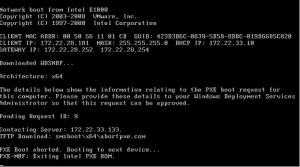How to Fix a Slow Computer



How to Fix a Slow Computer: A Comprehensive Guide to Speeding Up Your PC
A slow computer can be incredibly frustrating, disrupting your workflow and making even simple tasks seem agonizingly slow. Whether you use your computer for work, gaming, or entertainment, a sluggish system can be a major hindrance. In this comprehensive guide, we’ll explore effective strategies, tools, and preventive measures to help you speed up your PC and keep it running smoothly.
The Impact of a Slow Computer
Before we dive into solutions, let’s understand why a slow computer can have such a significant impact:
1. Decreased Productivity
Slow computers can make even basic tasks, like opening applications or browsing the web, time-consuming. This can lead to a decrease in productivity, especially if you rely on your computer for work or school.
2. Frustration and Stress
Dealing with a slow computer can be incredibly frustrating. It can lead to stress, irritability, and even affect your overall well-being. Something as simple as waiting for a program to load can become a major source of stress.
3. Data Loss Risks
A slow computer may also increase the risk of data loss. Slow performance can lead to delays in backup processes, potentially leaving your important files vulnerable.
Strategies to Fix a Slow Computer
Now, let’s explore practical strategies to help you speed up your computer effectively. Depending on the severity and underlying causes of the slowdown, different methods may be necessary.
1. Remove Unnecessary Startup Programs
Many programs launch automatically when you start your computer, consuming valuable system resources. To manage startup programs:
– On Windows:
Press Ctrl + Shift + Esc to open Task Manager.
Navigate to the “Startup” tab and disable unnecessary programs from launching at startup.
– On macOS:
Go to “System Preferences” > “Users & Groups.”
Select your username and navigate to the “Login Items” tab to manage startup programs.
2. Clear Disk Space
Insufficient disk space can significantly slow down your computer. To free up space:
– Delete Unnecessary Files:
Regularly remove temporary files, duplicate files, and large files you no longer need.
– Uninstall Unneeded Programs:
Remove software applications you rarely or never use.
– Use Built-In Utilities:
On Windows, utilize Disk Cleanup to remove unnecessary files.
On macOS, use the Optimized Storage feature to manage storage space effectively.
3. Update Your Operating System and Drivers
Outdated software and drivers can lead to compatibility issues and performance problems. To update your system:
– On Windows:
Go to “Settings” > “Update & Security” > “Windows Update” to check for updates.
Visit the manufacturer’s website to update drivers for your hardware components.
– On macOS:
Go to the Apple menu > “System Preferences” > “Software Update” to check for macOS updates.
Visit the manufacturer’s website or use the App Store to update drivers.
4. Upgrade Your Hardware
If your computer is still slow after software optimizations, consider upgrading hardware components:
– Add More RAM:
Upgrading RAM can significantly boost performance, especially if you work with resource-intensive applications.
– Upgrade to an SSD:
Replacing your hard drive with a solid-state drive (SSD) can dramatically improve boot times and overall system speed.
– Consider a CPU or GPU Upgrade:
Depending on your computer’s usage, upgrading the central processing unit (CPU) or graphics processing unit (GPU) may be beneficial.
5. Run System Maintenance Utilities
Both Windows and macOS provide built-in maintenance utilities that can help optimize your computer:
– On Windows:
Use the built-in Disk Cleanup and Disk Defragmenter utilities to clean up and optimize your hard drive.
– On macOS:
Run the built-in First Aid tool in Disk Utility to check and repair disk errors.
6. Scan for Malware and Viruses
Malware and viruses can significantly impact computer performance. Run regular scans using reputable antivirus and anti-malware software to detect and remove threats.
7. Disable Visual Effects
Disabling certain visual effects can improve system performance:
– On Windows:
Go to “Control Panel” > “System and Security” > “System.”
Click “Advanced system settings” and navigate to the “Advanced” tab.
Under “Performance,” click “Settings” and select “Adjust for best performance” or customize visual effects individually.
– On macOS:
Go to “System Preferences” > “Accessibility.”
Under the “Display” section, check “Reduce motion” and “Reduce transparency.”
8. Clean Dust and Ventilation
Overheating can slow down your computer. Ensure proper ventilation and clean any dust from fans and vents to prevent overheating issues.
Preventive Measures to Maintain Computer Speed
Prevention is key to keeping your computer running smoothly over time. Consider these preventive measures:
1. Regularly Back Up Your Data
Frequent data backups can protect your files in case of unexpected issues or hardware failures. Use external drives or cloud-based services for backups.
2. Install and Update Antivirus Software
Ensure your computer is protected from malware and viruses by using reputable antivirus software and keeping it up to date.
3. Be Cautious with Downloads and Email Attachments
Exercise caution when downloading files or opening email attachments, as these can introduce malware to your system.
4. Avoid Overloading Your Computer
Limit the number of open applications and browser tabs to prevent your computer from becoming overwhelmed.
5. Keep Your Environment Clean
Maintain a clean and dust-free workspace to prevent dust from accumulating in your computer’s internals.
6. Schedule Regular Maintenance
Set a schedule for routine computer maintenance, including software updates, disk cleanup, and virus scans.
Tips for Safe and Effective Computer Maintenance
When implementing computer maintenance tasks, follow these tips for safety and effectiveness:
– Backup Before Major Changes
Before performing significant system upgrades or changes, ensure you have a recent backup of your data.
– Use Reputable Software
Download software and drivers only from trusted sources to avoid installing potentially harmful programs.
– Monitor System Health
Use built-in or third-party system monitoring tools to keep an eye on your computer’s temperature, performance, and resource usage.
– Keep Your Passwords Secure
Maintain strong, unique passwords for your computer and online accounts to prevent unauthorized access.
– Seek Professional Help When Needed
If you encounter complex hardware or software issues, consider consulting a professional technician for assistance.
Conclusion
A slow computer doesn’t have to be a source of frustration and decreased productivity. By implementing the strategies outlined in this comprehensive guide and adopting preventive measures, you can speed up your PC and maintain optimal performance.
Remember that regular maintenance and vigilance are key to preventing slowdowns and ensuring your computer serves you efficiently for years to come.
For even more detailed information on computer maintenance and answers to your questions, visit our website. We provide comprehensive resources and themes dedicated to helping you keep your computer in top condition.








